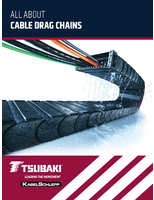NREL earns federal technology transfer accolades.
Share:
Press Release Summary:
A technology from NREL for depositing crystalline silicon onto inexpensive substrate materials has been recognized with 2011 Award for Excellence in Technology Transfer from Federal Laboratory Consortium. "Flexible Thin-Film Crystalline-Silicon Photovoltaics on RABiTS" project was developed in conjunction with DOE's Oak Ridge National Laboratory. Devised at ORNL, Rolling Assisted Biaxially Textured Substrate provides flexible metal foil platform for high-temperature superconducting materials.
Original Press Release:
NREL Earns Federal Technology Transfer Accolades
Technology to help bring low-cost flexible photovoltaics to market
A technology from the U.S. Department of Energy's (DOE) National Renewable Energy Laboratory (NREL) for depositing crystalline silicon onto inexpensive substrate materials has been recognized with a 2011 Award for Excellence in Technology Transfer from the Federal Laboratory Consortium.
The "Flexible Thin-Film Crystalline-Silicon Photovoltaics on RABiTS" project was developed in conjunction with DOE's Oak Ridge National Laboratory (ORNL).
NREL' s hot-wire chemical vapor deposition opens the door for low-cost photovoltaics (PV) by depositing thin layers of crystalline silicon onto substrates as extremely efficient light-harvesting layers for PV devices. This process minimizes energy input and eliminates several material-wasting steps, resulting in lower overall cost compared to conventional silicon wafer photovoltaic technologies.
The Rolling Assisted Biaxially Textured Substrate (RABiTS) devised at ORNL is a flexible metal foil that provides a platform for an entire generation of today's high-temperature superconducting materials and products. RABiTS involved a technology portfolio of more than 50 patents.
ORNL and NREL teamed to license their combined technologies to Ampulse Corporation, a venture-backed startup located near NREL in Golden, Colo.
"The merging of these two technologies offers the promise of flexible, highly efficient, low-cost, and durable photovoltaic materials and opens the door for a whole new generation of devices for the solar market," NREL Vice President for Commercialization & Technology Transfer William Farris said.
Ampulse is combining the two technologies to produce a unique product line of low-cost, high-efficiency, flexible photovoltaic materials and devices. The company has worked with NREL since 2008 through a cooperative research and development agreement (CRADA). The project received support from DOE's Technology Commercialization & Deployment Fund (TCDF) during its early stages through matching funds to an Ampulse contribution. As part of the TCDF program, NREL received resources to invest in commercializing promising new technologies through commercial partnerships.
"Our initial technology successes from those funds gave Ampulse the chance to raise $8 million in private capital," NREL Principal Scientist Howard Branz said. The research partnership with NREL is now fully funded by Ampulse.
The NREL team being recognized for this project includes Branz and Charles Teplin of NREL's National Center for Photovoltaics and Farris, Chris Harris and Matthew Ringer of the NREL Technology Transfer Office.
The FLC awards recognize laboratory employees who have accomplished outstanding work in the process of transferring a technology developed by a federal laboratory to the commercial marketplace. The 2011 Awards will be presented on May 5 at the FLC National Meeting in Nashville, Tenn. For more information on the FLC awards go to http://www.federallabs.org/awards/.
NREL is the Department of Energy's primary national laboratory for renewable energy and energy efficiency research and development. NREL is operated for DOE by The Alliance for Sustainable Energy, LLC.




